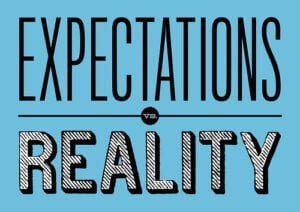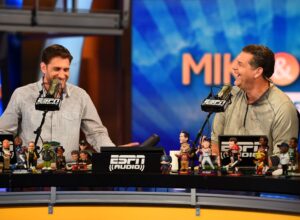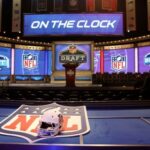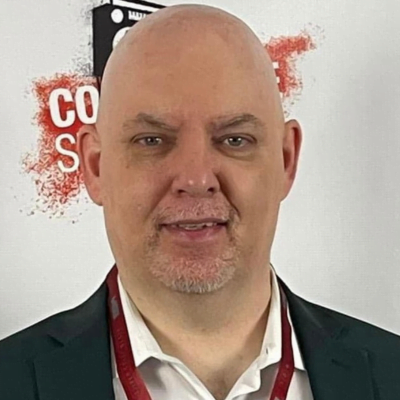We’ve reached that time of year where most sports radio stations across the country prepare for a ratings decline following a strong fall and impressive January. As we’ve learned throughout the years, the NFL is king, and although many stations will recover in April when baseball returns, the NFL Draft unfolds, and the NBA and NHL Playoffs begin, the winter months can be very unforgiving, especially February.
So what do you do?
Well there are plenty of suggestions to consider, and I thought it’d be helpful to remind you of a few critical things as you prepare to deal with a month where the audience mentally disconnects from your show and radio station.
 First, it’s important to sell your radio station’s success quarterly and annually. Make sure your advertisers don’t have false expectations entering each month. By letting them know in advance that February is likely to dip, whereas the Fall months are likely to rise, you’re setting realistic and measurable expectations which the client will thank you for. We can pretend that these aren’t realities, and maybe with some luck you’ll avoid a drop in February, but by being honest and realistic, advertisers are more likely to stick with you during the tougher months.
First, it’s important to sell your radio station’s success quarterly and annually. Make sure your advertisers don’t have false expectations entering each month. By letting them know in advance that February is likely to dip, whereas the Fall months are likely to rise, you’re setting realistic and measurable expectations which the client will thank you for. We can pretend that these aren’t realities, and maybe with some luck you’ll avoid a drop in February, but by being honest and realistic, advertisers are more likely to stick with you during the tougher months.
Secondly, meet with your shows and staff and explain to them how the radio station has performed in previous year’s during the first quarter. It’s common for sports stations to have a strong January, a slower February, and make up a little ground in March before seeing a bigger increase in April.
One thing I encourage you to do, be honest with your staff and remind them that no less effort is acceptable, and the goal remains to stay flat or gain ground from January, but it’s also possible that despite cranking out compelling content, and busting their asses, that the ratings could suffer. This has more to do with sports radio fatigue and a lack of football and baseball than anything else. Stress the importance of driving the audience back to one another’s programs, because one additional tune-in could be the difference between a dip and staying afloat.
 Since the listening levels are likely to decline in February, this is a good time to encourage your key people to use some vacation time. It allows them to breakaway from the radio station during a time where they may have to dig deeper than usual to find good local content, and it assures you that they’re less likely to hurt the radio station’s momentum later in the year. In many cases, your key people have grinded out the past 6 months covering the NFL, so they’re likely in need of a mental break. This is the perfect time to take one.
Since the listening levels are likely to decline in February, this is a good time to encourage your key people to use some vacation time. It allows them to breakaway from the radio station during a time where they may have to dig deeper than usual to find good local content, and it assures you that they’re less likely to hurt the radio station’s momentum later in the year. In many cases, your key people have grinded out the past 6 months covering the NFL, so they’re likely in need of a mental break. This is the perfect time to take one.
The next item I want you to think about, is how you can take advantage of a reduced period of listening. We often toss around the term “think outside the box” in this business, and in February, this is where the great programmers, talent, and brands get ultra-creative and find ways to capture some excitement, even if it’s for an extra day or two.
For example, in Houston, Sports Radio 610 KILT has used the time to invite the audience to get involved and trade their personalities to other dayparts and roles on the radio station. While this won’t lift the radio station’s ratings for an entire month, it’s topical and plays off of the NBA Trade Deadline, and it takes an otherwise slow period, and gives the station some buzz for a week or two.
This becomes fun for the hosts on the air, and for one day out of the year, it gives the audience a different sound of the brand. Some hosts will enjoy the change of pace, others may not depending on which roles they get thrust into, but in either case, the listeners feel empowered and the staff shows they’re willing to play along for the betterment of the audience. In some instances, a chord could be struck between some talent on the air that may come into play one day down the line. That one day of additional listening could also help the station avoid a setback for the month.
 If you’ve listened to “Mike and Mike” throughout the years, you’ve likely heard them previously use the week after the Super Bowl to present their awards for the NFL season. That’s a great move because it takes the one subject that has driven audience tune-ins for the past 6 months, and keeps it relevant for an extra 5 days. By encouraging the audience to vote, playing audio clips centered around the key categories, and booking guests who are tied to each individual award, it makes the show interesting, and that’s a smart way to connect during a slow period.
If you’ve listened to “Mike and Mike” throughout the years, you’ve likely heard them previously use the week after the Super Bowl to present their awards for the NFL season. That’s a great move because it takes the one subject that has driven audience tune-ins for the past 6 months, and keeps it relevant for an extra 5 days. By encouraging the audience to vote, playing audio clips centered around the key categories, and booking guests who are tied to each individual award, it makes the show interesting, and that’s a smart way to connect during a slow period.
In my personal experiences, this was the month where I’d kick off a major promotion in San Francisco titled “Lucky Break”. The idea behind it was to go town to town auditioning people for a chance to make the cast of 16 for a weekly show where undiscovered talent get a chance to perform in front of judges, audiences, and against top talent and celebrities, with the ultimate prize being a one-year contract to host shows on the radio station.
I decided after three years of doing it that the promotion had run its course at 95.7 The Game, but there’s no question that the buzz for it was excellent, and the audience got behind it. While we dealt with lower ratings in February, our digital performance shot up tremendously. This was another way to take those advertisers who may be looking at spending less on the air, and re-direct their dollars into another area.
 We’d launch the off-air auditions right after the Super Bowl and promote them on-air, and after doing 4-5 and gathering our field of 16, we’d hit the air each Wednesday night in March and present different challenges each week to see who had the skills to excel in sports radio. When baseball returned during the first week of April, we’d crown our winner, and they’d start hosting on the weekend and at night as needed.
We’d launch the off-air auditions right after the Super Bowl and promote them on-air, and after doing 4-5 and gathering our field of 16, we’d hit the air each Wednesday night in March and present different challenges each week to see who had the skills to excel in sports radio. When baseball returned during the first week of April, we’d crown our winner, and they’d start hosting on the weekend and at night as needed.
If you think that damages your brand’s image or puts someone on the air who isn’t ready for it, I’ll leave you with this – I heard that same stuff from many in San Francisco when we rolled out the idea. By the end of it, most of the talent would tell you that they weren’t sure themselves that they could have won the contest. If done right, it presents the cast in a positive light, shows how difficult doing great sports radio can be which inspires others to want to learn more about it, it creates buzz in your city which leads to additional marketing, keeps your advertiser’s dollars tied to a big promotion, and generates some life on your airwaves during a dead listening period.
And if you’re still not convinced, four members from that promotion are still employed by The Game in SF today, and Joe Beningo of WFAN, and Chris Dimino of 680 The Fan were once callers to sports talk shows, and they’ve since gone on to have lengthy careers and build strong brands in the New York and Atlanta areas. All they needed was someone willing to give them a shot – they took care of the rest.
One other idea to consider, is to think about what is happening locally or nationally that has people talking. Is there a way for your brand and personalities to tap into it? Let’s use a national angle for this example.
Whether you’re a Republican or Democrat, you’re familiar with who’s running for President. The debates are dominating local media coverage, and with the election taking place in November, you can be sure that the interest in who will lead the country is only going to intensify.
 Whether it’s taking 2 of your key personalities, the entire station’s lineup, local celebrities, callers, or people from the local sports world, creating a debate night over sports issues that are relevant to your audience, is not hard to pull off. With the right amount of pre-promotion, the right venue, the right format, and the right inclusion in your weekday programming, you can create a compelling program that leads to additional buzz before, during, and after the event. It also gives your sales team an extra sellable event, and can help you boost your digital and social media activity.
Whether it’s taking 2 of your key personalities, the entire station’s lineup, local celebrities, callers, or people from the local sports world, creating a debate night over sports issues that are relevant to your audience, is not hard to pull off. With the right amount of pre-promotion, the right venue, the right format, and the right inclusion in your weekday programming, you can create a compelling program that leads to additional buzz before, during, and after the event. It also gives your sales team an extra sellable event, and can help you boost your digital and social media activity.
The key of course is selecting the right people and content, but that’s what good programmers and talent are supposed to do.
If debates aren’t your cup of tea, and you’ve got the rights to a baseball team in your city, or if covering the club is a critical piece of your station’s local programming strategy, maybe this is the time of the year when you send a show or two to spring training to do LIVE shows, feature players on the air, and begin the build for what’s coming your way in April. The teams will appreciate it, and the work you do during the lighter times of the season, can provide benefits to you later in the year when things get more hectic. It’s also another opportunity for clients to be attached to an attractive promotion during a time when they may consider removing their money for a month.
 If you aren’t a big baseball station but have strong audience interest in the NFL, especially if your team is going to be picking in the Top 5 of the upcoming NFL Draft, maybe you send a talent or two to the NFL Scouting Combine to do LIVE shows and talk to GM’s, Agents, Head Coaches, and Prospects to ramp up the interest heading into April’s Draft. The NFL interests people year round and the Draft is the highest rated non-sporting event. You can’t go wrong by spending extra time covering it. Again, sponsorships can be customized for your local advertisers.
If you aren’t a big baseball station but have strong audience interest in the NFL, especially if your team is going to be picking in the Top 5 of the upcoming NFL Draft, maybe you send a talent or two to the NFL Scouting Combine to do LIVE shows and talk to GM’s, Agents, Head Coaches, and Prospects to ramp up the interest heading into April’s Draft. The NFL interests people year round and the Draft is the highest rated non-sporting event. You can’t go wrong by spending extra time covering it. Again, sponsorships can be customized for your local advertisers.
Lastly, if you have an NBA team in your city and they’re playing lights out (Golden State/Cleveland) or they have a compelling story (LA Lakers-Kobe retiring, Houston Rockets-Dwight Howard Trade Possibility, New York Knicks-Phil Jackson’s Future-Carmelo Possibly Being Traded), this may be the time when you start adding additional programming to increase tune-ins. Maybe you hire a contributor with a strong NBA name to start appearing weekly on your shows. If that’s not enough, maybe you put together two local analysts/former players for a special weekly basketball hour on one of your top shows, or you start producing a weekly, bi-weekly, or even nightly NBA program leading up to the Trade Deadline.
I recognize that some cities may have tougher months than February, especially if they’re markets that function without a baseball team and rely on college sports. In those cases, use this blueprint to help you during your most challenging times. That said, this column should apply to most markets which see their success tied to NFL/MLB/NBA interest.
Whichever you path you choose, the goal is to increase audience interest one day at a time. It’s going to take creativity and additional excitement to bring your listeners back to the dial during the next 6 weeks. If P1 listeners love your brand but need a mental time out in February, and their lack of listening leads to lower ratings and revenue, are you just going to stand by and accept that?
Of course not!
So the real question becomes, what are you going to do to gain their attention and make them want to spend an extra segment or two with your radio station? It’s not an easy task, but those who find a way to get it done, don’t experience the same setbacks that others do – and that’s what separates a good brand from a great brand, especially during the dead zone of February.

Jason Barrett is the President and Founder of Barrett Media since the company was created in September 2015. Prior to its arrival, JB served as a sports radio programmer, launching brands such as 95.7 The Game in San Francisco, and 101 ESPN in St. Louis. He also spent time programming SportsTalk 950 in Philadelphia, 590 The Fan KFNS in St. Louis, and ESPN 1340/1390 in Poughkeepsie, NY. Jason also worked on-air and behind the scenes in local radio at 101.5 WPDH, WTBQ 1110AM, and WPYX 106.5. He also spent two years on the national stage, producing radio shows for ESPN Radio in Bristol, CT. Among them included the Dan Patrick Show, and GameNight.
You can find JB on Twitter @SportsRadioPD. He’s also reachable by email at Jason@BarrettMedia.com.




